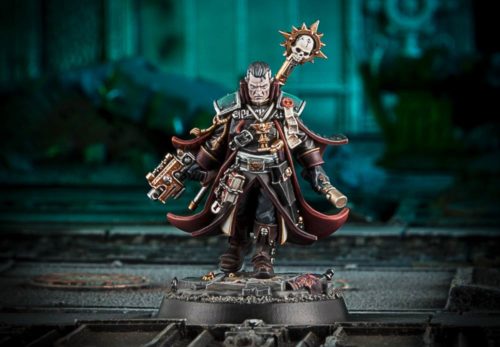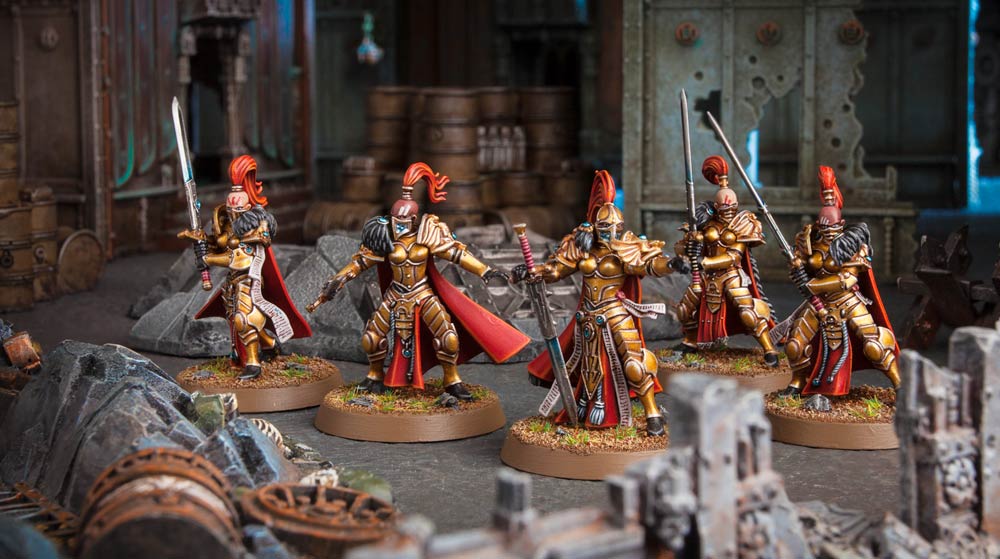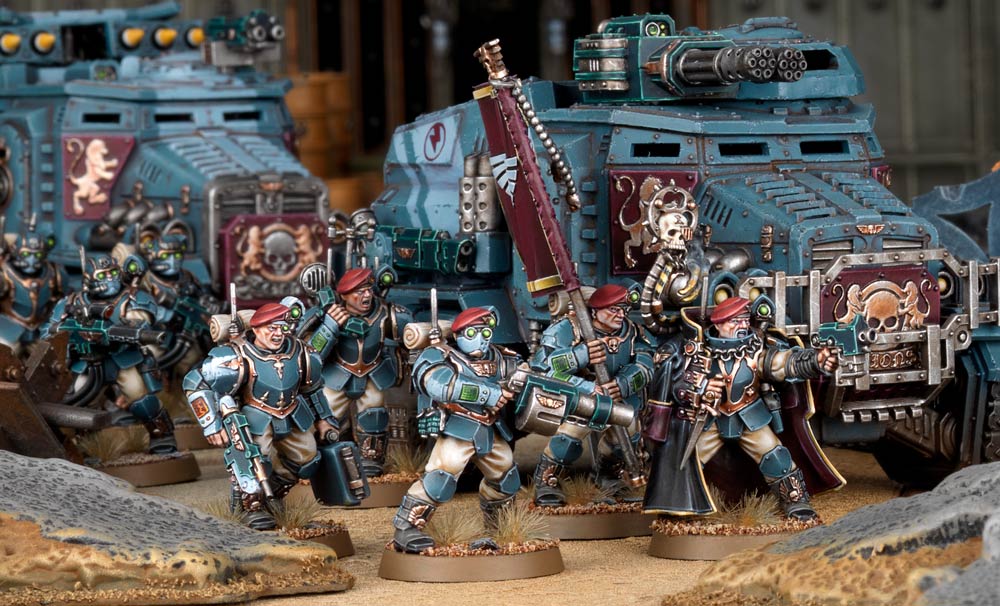Inquisitor Eisenhorn is getting released this Saturday, 2 days from now. Here is a good look at his rules and how he can be played on the tabletop.
To download your rules.....
https://whc-cdn.games-workshop.com/wp-content/uploads/2018/02/InquisitorEisenhorn-Datasheet-Feb2018.pdf
via the Warhammer Community
https://www.warhammer-community.com/2018/02/22/inquisitor-eisenhorn-tabletop/
This Saturday sees the release of a powerful new agent of the Imperium to use in your games of Warhammer 40,000. Coming out as part of the Black Library Celebration, Inquisitor Eisenhorn is a beautiful model, perfectly representing the hero of Dan Abnett’s classic novels, as well as a potent ally for Imperial armies.
At first glance, Inquisitor Eisenhorn has a few subtle advantages over his unnamed colleagues in Index: Imperium 2. His statline boasts an extra point of Leadership – which is useful for the Unquestionable Wisdom ability, which allows friendly Imperium units in 6″ to use his superior Leadership. He also has the Authority of the Inquisition and Quarry abilities, which let him use any Imperial transport vehicle as his own and re-roll hit and wound rolls of 1 against alien enemies, as befits an Inquisitor of the Ordo Xenos.
Like many Inquisitors, Eisenhorn is a Psyker. In Black Library’s fiction, this manifests as what Eisenhorn calls his “Will”, an ability to nudge enemies into betraying themselves for a moment and to psychically interrogate suspects. On the tabletop, he knows two powers chosen from the Inquisition’s Telethesia discipline (plus Smite, of course), allowing Eisenhorn to dominate the minds of enemy models, reduce their Leadership, or bolster the morale of friendly forces.
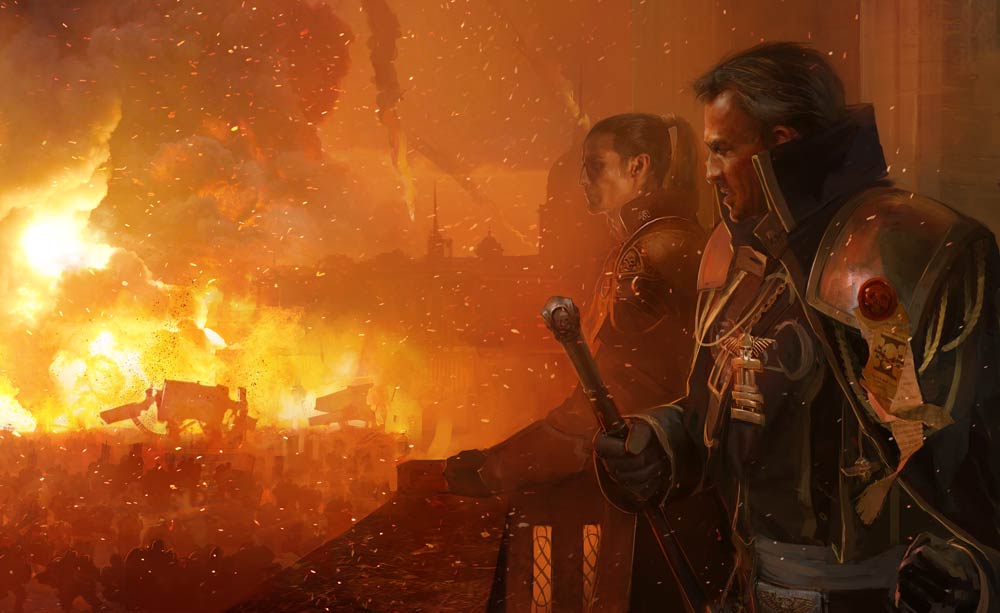
Eisenhorn’s Will also manifests in his No Stranger to Pain ability. This allows him to shrug off wounds on the roll of a 6, nicely representing his refusal to give up, no matter the odds or the cost to himself.
His weapons help to make Eisenhorn useful against a variety of foes. His trusty artificer bolt pistol, a gift from a Space Marine Librarian after they fought together in the novel Xenos, is a cut above those carried by others, boasting -1 AP as well as doing 2 damage. And when he’s up against a vehicle, Eisenhorn can throw an electrobane grenade, potentially causing mortal wounds as well as regular damage.
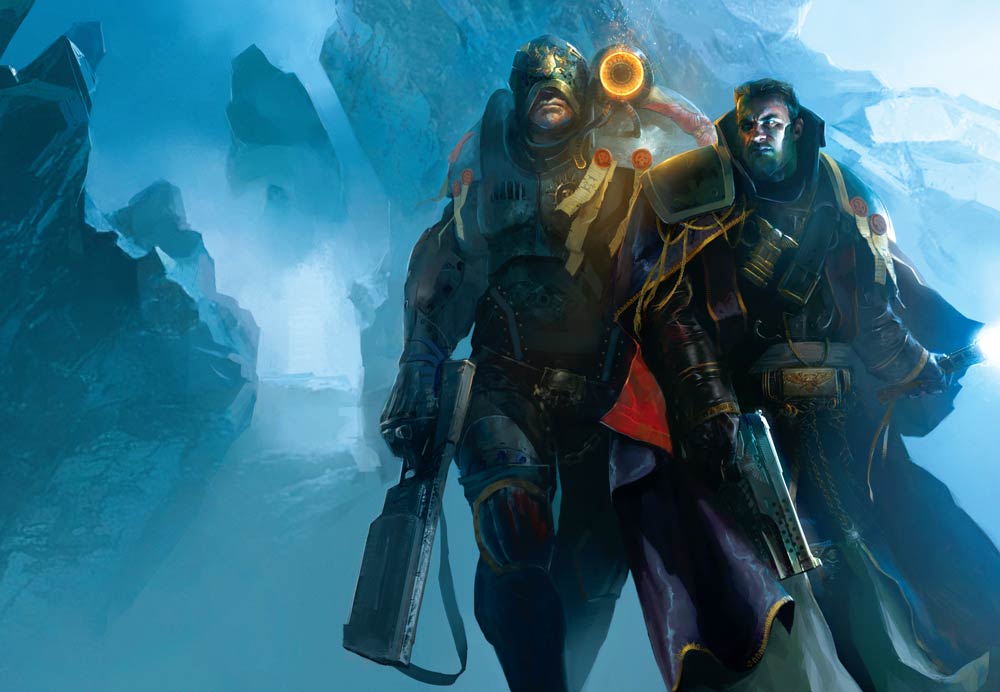
Eisenhorn prefers to get up close and personal with his quarry, and he has two close combat weapons which help him go toe to toe with the most fearsome foes. His sword Barbarisater, made from the shattered remnants of an ancient blade carried by his dead companion Arianhrod Esw Sweydyr, is an especially dangerous power sword, doing D3 damage per successful wound, and giving Eisenhorn +1 to hit, as he uses the Ewl Wyra Scryri martial form taught to him by Arianhrod. Alternatively, he can attack with his unique runestaff, topped with a skull carved from psychically resonant living crystal and modelled on exact scans of Eisenhorn’s own skull. This adds +3 to his Strength, allowing him to wound especially tough enemies.
Of course, when there’s an opponent who just won’t go down, Inquisitor Eisenhorn has an ally to call upon. Though he started his career as a puritan, devoted to destroying the works of the Dark Gods as much as the aliens he hunts, experience and necessity changed Eisenhorn. In time, he bound the Daemonhost Cherubael to his service, and in times of need, he unleashes the creature to aid him. This is represented by the Malus Codicium ability. When this is used, it negates the Unquestionable Wisdom rule – few loyal Imperial servants will continue to take an Inquisitor’s order after seeing him consort with a Daemon – but allows the Imperial player to add a Daemonhost to their army – and a seriously formidable one at that, with better Strength, Toughness, Attacks and Wounds characteristics! And if that wasn’t enough, it gets +1 to hit rolls, wound rolls and saves while it’s near Eisenhorn, making it an absolute powerhouse.
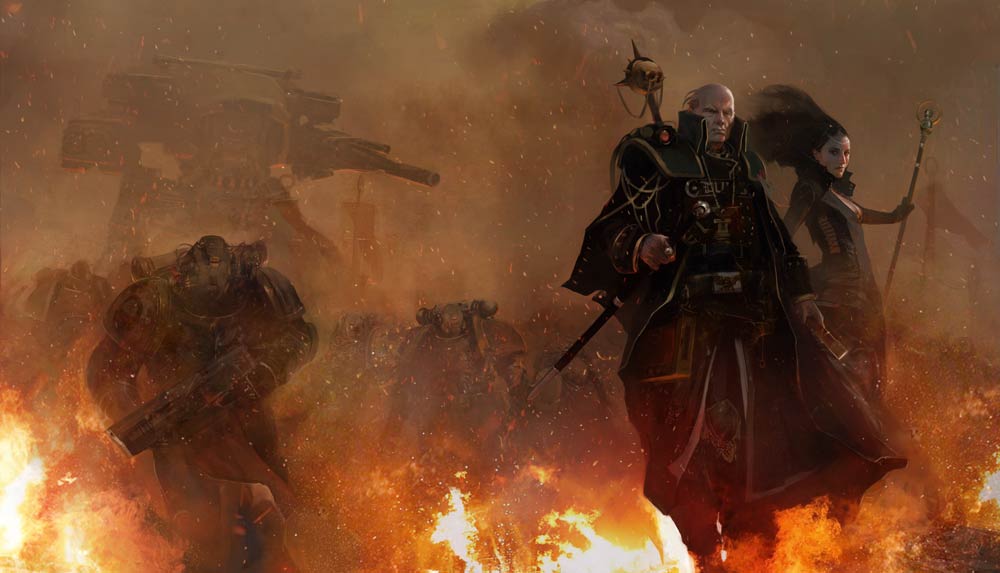
So that’s Inquisitor Eisenhorn on the tabletop. For just 100 points in a matched play game (plus the reinforcement points cost of Cherubael), you get a versatile character who can add psychic might to your army, inspire your troops and take on tough foes – and bring a potentially game-changing ally into play when you need it. Of course, in Dan Abnett’s stories, Eisenhorn rarely works alone, and it would be fun and thematic to bring some companions along to help Eisenhorn in battle. In matched play, your best bet is a group of Acolytes from Index: Imperium 2. These can be useful to soak up wounds that would otherwise take Eisenhorn down – and that fits the trail of bodies he leaves behind him in the books. And as a member of the Ordo Xenos, it wouldn’t be unusual to see Eisenhorn fight alongside a Deathwatch Kill Team. (We’d avoid Grey Knights, though – they tend to take exception to Inquisitors who use Daemonhosts.)
But what about narrative and open games? We thought it would be fun to see how we could represent some of the companions who follow Eisenhorn throughout his adventures – especially since they’re a large part of why so many people enjoy the novels and short stories.
Alizebeth Bequin was one of Eisenhorn’s longest-serving allies. She is a psychic blank, recruited on the icy world of Hubris in one of his early adventures. She’s also the love of Eisenhorn’s life, although the pain her soulless nature caused him killed any chance of a relationship. Bequin would be nicely represented by a Sisters of Silence Prosecutor – and as she ended up recruiting many more blanks for Eisenhorn’s service, she could be accompanied by some of these to allow you to use a whole squad of Prosecutors alongside the Inquisitor.
Cherubael is, of course, covered by the Malus Codicium ability, but there are times when Eisenhorn needs more power than the shackled Daemon can provide – such as when he and his retinue were threatened by a Chaos-tainted Titan in Hereticus. To represent this in narrative games, Eisenhorn could have the option to fully unleash Cherubael, replacing his abilities and stats with those of the Daemon Prince he truly is for a turn before he is bound once again – though we’d recommend this is at great cost to Eisenhorn, perhaps dealing him D3 mortal wounds as the psychic feedback ravages his body and soul.
Of the many soldiers who’ve served alongside Eisenhorn, Godwyn Fischig and Harlon Nayl are among the most memorable and skilled. Fischig is an Adeptus Arbites officer recruited from the same world as Bequin, while Nayl was a bounty hunter, skilled at tracking and taking down prey. Both could be well represented by the datasheet for a Tempestor Prime, though perhaps swapping out weapons for a sturdy combat shotgun for Fischig, and a heavy stubber for Nayl, to represent the kind of high-calibre weapons he prefers.
Kara Swole, originally an acrobat and dancer and extremely skilled killer adept at infiltration as well as combat, could be used on the tabletop as a Callidus Assassin – a useful addition to any Imperial force.



